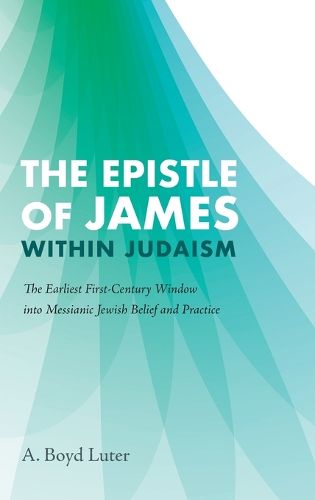Readings Newsletter
Become a Readings Member to make your shopping experience even easier.
Sign in or sign up for free!
You’re not far away from qualifying for FREE standard shipping within Australia
You’ve qualified for FREE standard shipping within Australia
The cart is loading…






This title is printed to order. This book may have been self-published. If so, we cannot guarantee the quality of the content. In the main most books will have gone through the editing process however some may not. We therefore suggest that you be aware of this before ordering this book. If in doubt check either the author or publisher’s details as we are unable to accept any returns unless they are faulty. Please contact us if you have any questions.
In this volume, A. Boyd Luter initially makes the case that the Letter of James was the first New Testament document and that it was written for a primarily Messianic Jewish audience in the Diaspora. Its early origin places James as the foundational Messianic Jewish Scripture of the new covenant era. That, however, is a drastically different take on the letter's dating, audience, and purpose from the long-held supersessionist view in which Israel is replaced by the church. In the supersessionist understanding, James is one of the later New Testament books, originating supposedly at a time when it was already expected for the church to be symbolically "the twelve tribes in the Diaspora." And, since a common first impression of the letter is that its style is reflective of Old Testament wisdom literature, it was taken as dealing with practical issues of the Christian life through a staccato format much like Proverbs. Instead, through the elegant literary vehicle of an overarching inverted parallel structure, the Letter of James communicates its author's approach to issues among his Messianic Jewish audience related to spiritual growth and purity, as well as putting away class-based favoritism and the relationship between faith and works.
$9.00 standard shipping within Australia
FREE standard shipping within Australia for orders over $100.00
Express & International shipping calculated at checkout
This title is printed to order. This book may have been self-published. If so, we cannot guarantee the quality of the content. In the main most books will have gone through the editing process however some may not. We therefore suggest that you be aware of this before ordering this book. If in doubt check either the author or publisher’s details as we are unable to accept any returns unless they are faulty. Please contact us if you have any questions.
In this volume, A. Boyd Luter initially makes the case that the Letter of James was the first New Testament document and that it was written for a primarily Messianic Jewish audience in the Diaspora. Its early origin places James as the foundational Messianic Jewish Scripture of the new covenant era. That, however, is a drastically different take on the letter's dating, audience, and purpose from the long-held supersessionist view in which Israel is replaced by the church. In the supersessionist understanding, James is one of the later New Testament books, originating supposedly at a time when it was already expected for the church to be symbolically "the twelve tribes in the Diaspora." And, since a common first impression of the letter is that its style is reflective of Old Testament wisdom literature, it was taken as dealing with practical issues of the Christian life through a staccato format much like Proverbs. Instead, through the elegant literary vehicle of an overarching inverted parallel structure, the Letter of James communicates its author's approach to issues among his Messianic Jewish audience related to spiritual growth and purity, as well as putting away class-based favoritism and the relationship between faith and works.